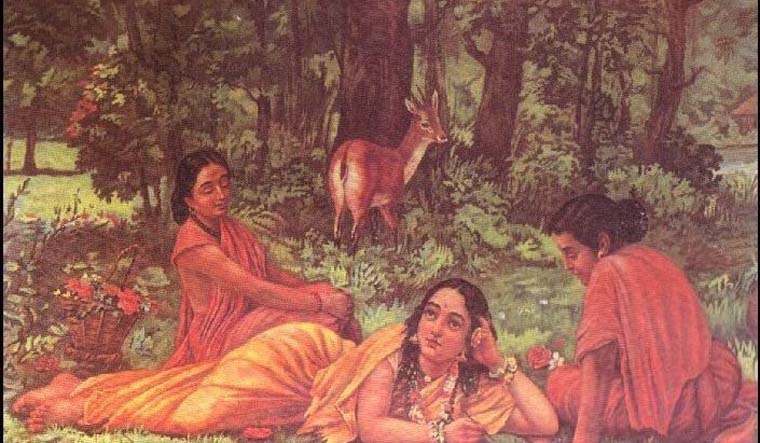It was Sir William Jones who first translated poet Kalidasa's drama Abhijnanasakuntalam into English, in 1789. Europe was surprised that India had its share of plays and dramas. Jones even compared the great Sanskrit poet and dramatist to Shakespeare for a European audience. In the next 100 years, some 46 translations of Abhijnanasakuntalam were believed to have been undertaken in 12 European languages. Abhijnanasakuntalam, a Sanskrit play, draws from an episode in Mahabharata and dramatises the thorny love story between a powerful and virtuous king, and a forest-dwelling maiden named Sakuntala.
In 1791, Georg Forster, German explorer, scientist and litterateur, brought out the prose translation of Jones' Sakuntala. He even sent a copy to Goethe who enthusiastically lapped it up and praised it so:
If in one word of blooms of early and fruits of riper years,
Of excitement and enchantment I should tell,
Of fulfillment and content, of Heaven and Earth;
Then will l but say Sakuntala and have said all.
And thus, Indian divinity, myths, and Sanskrit began trending in Germany at the time. The fictional forest-maiden, Sakuntala, became a symbol of angelic grace and innocence. An Austrian physicist, librarian and poet by the name of Johann Philipp Neumann adapted Forster's translation into a libretto for an opera. He counted among his friends a composer none other than Franz Schubert himself. He could definitely set to music this timeless literary masterpiece from a faraway land. Thus Schubert began composing his Sakuntala opera around 1820 at a time when he was hired by two opera houses, Karthnerthof Theatre and Theater an der wein. He finished two acts and the original manuscript has 400 pages of unspecified music as its orchestral score. There were vocal parts for the text and nothing more. He did not complete composing the full text and no one really knows why. He could have lost interest; his opera compositions were not as well received as his songs anyway. And his financial situation was strained. He wrote around six operas and only two were staged in his lifetime, with not much success.
In 2006, a Danish composer revisited the unfinished Sakuntala opera and reconstructed it for the stage in Stuttgart.
Come October and Schubert's Sakuntala's opera will visit its country of origin, thanks to an Austrian-Indian ensemble with musicians, dancers and a narrator. On October 2, Lotus Temple in Delhi will host the concert version of the opera, to celebrate Austria’s presidency of the European Union this year. This concert has been arranged and completed by the composer, conductor and president of the Vienna Boy’s Choir, Professor Gerald Wirth, and will be performed by an Austrian Chamber Orchestra, specially commissioned for the Sakuntala performances. They will collaborate with the renowned Indian Shillong Choir. Thespian and former Doordarshan newsreader Sunit Tandon will be the narrator or sutradhar, and Kathak exponent Shovana Narayan will interpret the musical text with dance.
It was a only few months ago that Tandon was asked by the Austrian embassy to come on board, as he has already done shows with Narayan earlier as narrator. He is also the president of Delhi Music Society which runs the Delhi School of Music, a leading centre for Western classical music. As director of India Habitat Centre in New Delhi, he has been bringing opera screenings every month for the last five years. "Abhijnanasakuntalam is a masterpiece of world literature. One of the greatest plays ever written," says Tandon. "Schubert left a lot of unfinished work. He died very young [at 31]. My engagement will be to make it clear to the audience how the action proceeds in this particular version of the Sakuntala story. It will be sung in German and I will narrate in English," says Tandon, who is now looking forward to working with all the performers next month.
Shakuntala will be staged on October 2 in New Delhi at the Lotus Temple, followed by Kolkata and Mumbai.


